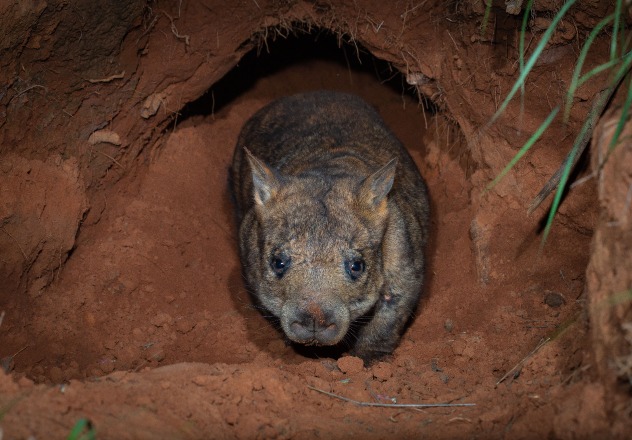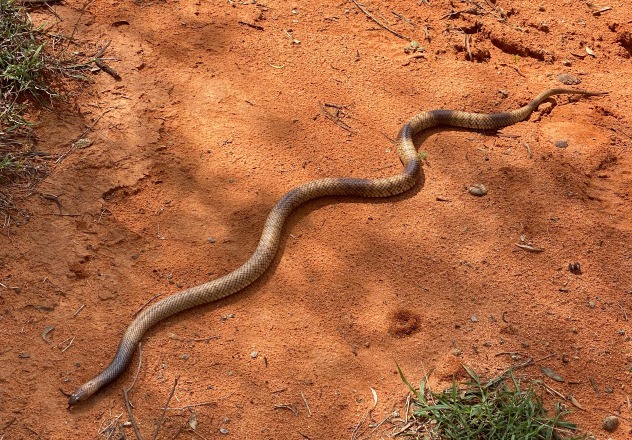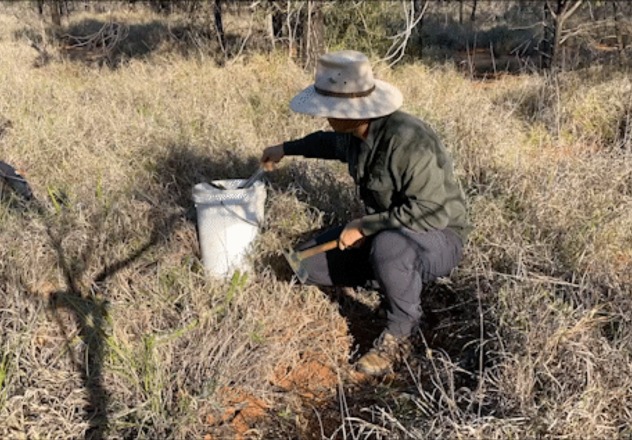For the month of October, AWC took on the caretaker role at Richard Underwood Nature Refuge (RUNR) as part of our partnership with the Queensland Department of Environment and Science (DES), supported by The Wombat Foundation, to help protect the Critically Endangered Northern Hairy-nosed Wombat.
You can watch world-first high-resolution footage of the Northern Hairy-nosed Wombat captured by brilliant AWC videographer Brad Leue at RUNR here.
It is a privilege to work with these beloved ‘barrels of the bush’, a species that is rarer than the more widely known Giant Panda and Sumatran Tiger. The extraordinary wombats were close to extinction in the 1980s, with numbers as low as 35 at their last natural stronghold in Epping Forest National Park (Scientific). The conservation efforts of DES have seen the population recover to just over 300 individuals.
 Brad Leue/AWC
Brad Leue/AWC
RUNR is located near St George in the south-west of Queensland and is home to the second population of Northern Hairy-nosed Wombats established by DES in 2009. RUNR caretaking is undertaken by dedicated volunteers and is hard yakka. Daily activities include GPS-tracking of collared wombats through the semi-arid woodland, serving as activity and animal health monitoring. The perimeter of the feral predator and herbivore-proof fence is inspected every two days. The area is fenced to stop wild dogs, which are significant predators to wombats. ‘Pesky’ Echidnas will dig under the fence’s 2-metre skirt and push their way through, so time is spent filling in holes and pegging down Echidna-shaped bulges in the wire.
 Andy Howe/AWC
Andy Howe/AWC
Camera traps are used to record the behaviours and interactions that the wombats have with each other and with other species. Water stations within the refuge are inspected and other important maintenance jobs carried out such as fixing camera traps, rewiring solar panels and charging batteries.
Weed control is a key land management activity at RUNR, particularly targeting buffel grass and tiger pear. Tiger pear is a highly invasive prickly cactus that gets stuck in wombats’ fur, or painfully embedded in their feet. All caretakers walk transects through the bush, digging out the weeds they come across.
AWC Senior Field Ecologist Andy Howe had boots on the ground at RUNR in October and focused his attention on tiger pear while he was there. ‘You just know that when you rip out a big tiger pear bush it’s no longer a threat to the wombats,’ Andy said. ‘It’s very rewarding. I felt a strong sense of directly helping to conserve the species.’
 Andy Howe/AWC
Andy Howe/AWC
Northern Hairy-nosed Wombats are the world’s largest burrowing marsupials, weighing up to 32 kilograms and living to at least 30 years of age. They are nocturnal, spending most of their time underground and emerging at night to feed. Major threats to the species are loss of habitat, predation from wild dogs, disease, and climate change.
 Andy Howe/AWC
Andy Howe/AWC
Northern Hairy-nosed Wombats are commonly seen on camera trap footage. Renowned for their shyness and air of mystery, it is far less common to see one with the naked eye during daylight hours. Andy was lucky enough to see just this at RUNR – a wombat out dust bathing in the sunshine. On approach, the wombat jumped up and sprinted back into its burrow.
Wombat tracks were a more readily visible sign of the exploits of the previous night. There was enough rain in October to smooth out the sand on the roads, so nightly wombat antics were easily spotted. Scat and fresh dirt flung out of burrows during wombat maintenance and excavation activities were also apparent across the refuge.
 Andy Howe/AWC
Andy Howe/AWC
AWC is a new partner in the DES-led Northern Hairy-nosed Wombat Recovery Program, supported by The Wombat Foundation, and it is a privilege to contribute to this collaborative effort. As well as caretaking, this year has seen multiple field trips into Northern Hairy-nosed Wombat territory: AWC ecologists have assisted with population censuses at RUNR and at Epping Forest National Park (Scientific) and surveyed part of the species’ historical distribution to find additional suitable habitat.
Support Australian Wildlife Conservancy's science-led conservation work and safeguard the future of Australia's native species
Donate Now